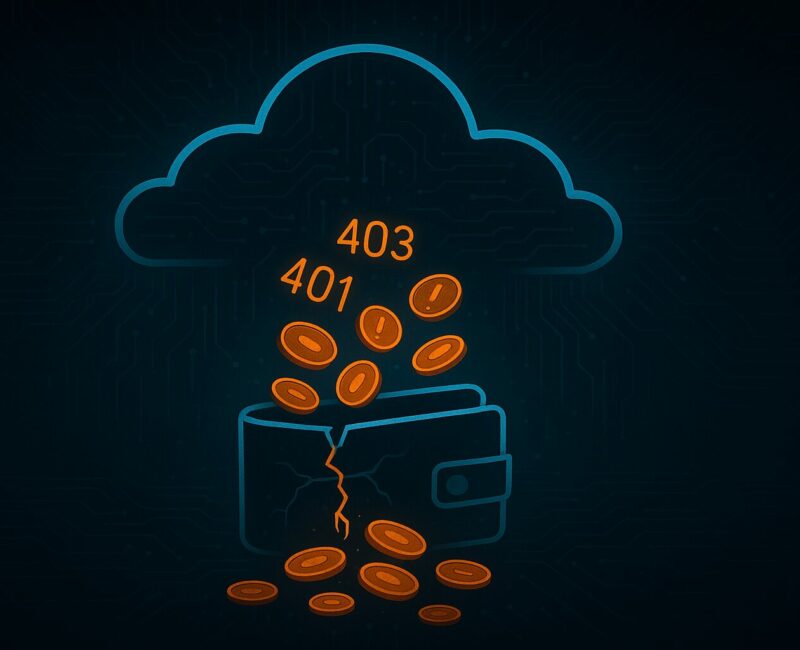Introduction
Storage services like Microsoft Azure Storage Accounts and Amazon S3 buckets offer scalability, durability, and ease of use. However, beneath these benefits lurks a financial risk—unauthorized requests can result in unexpected and excessive bills. This article examines how these seemingly harmless, rejected requests can lead to wallet drainage, the underlying mechanisms behind the billing practices, and strategies to mitigate the risk.
Background: Cloud Storage and Billing Models
Cloud storage services operate on a pay-as-you-go model where users are billed not only for storage but also for every request made to the service. Whether the request is successful or not, many operations (including unauthorized requests returning 4xx errors) are billable. In Azure, as documented in various Microsoft Q&A threads, even rejected API calls can incur charges. Similarly, AWS S3 buckets have faced incidents where unauthorized PUT requests have led to unexpectedly high bills—a phenomenon sometimes referred to as a “Denial-of-Wallet” attack.
Technical Mechanisms Behind Wallet Drainage
Unauthorized Request Billing
- Azure Storage Accounts: Unauthorized API calls—even when they result in 401/403 errors—are tracked and billed. This means that if an attacker sends a high volume of such requests, the owner of the storage account may see a spike in charges.
- Amazon S3 Buckets: S3 bills based on the number of requests and data transferred. Several incidents have shown that even 4xx (client error) responses are billable. Attackers can exploit this by flooding a bucket with unauthorized requests, causing exorbitant charges even if no data is successfully stored or retrieved.
Denial-of-Wallet Attacks
A Denial-of-Wallet attack is a type of financial DoS where an attacker intentionally triggers high-cost operations. By sending massive volumes of unauthorized requests (or even canceled range requests, which AWS bills for the entire requested range), an attacker can force a cloud service to scale up and inadvertently rack up huge expenses. This attack exploits the inherent design of cloud billing where every request counts—authorized or not.
Real-World Incidents
Case Study: AWS S3 Billing Shock
In one well-documented incident, a developer discovered a $1,300 bill after his S3 bucket was hit by nearly 100 million PUT requests in a single day. The culprit? An open-source backup tool that, due to its default configuration, repeatedly targeted the developer’s bucket name. Despite the bucket being private and the requests unauthorized, AWS billed the owner for all these operations.
Azure Billing Anomalies
Similarly, there have been reports of Azure Storage Accounts incurring unexpectedly high charges due to unauthorized access. Users have noted that even without active usage, their accounts were generating bills because of repeated unauthorized API calls highlighting a need for tighter security and better monitoring.
Mitigation Strategies
1. Strengthen Access Controls
- Implement strict authentication and authorization policies: Ensure that only trusted entities have access to your storage accounts.
- Use Shared Access Signatures (SAS) for Azure and pre-signed URLs for AWS S3: These tokens provide time-limited, scoped access to resources.
2. Monitor and Alert
- Set up billing alerts and usage monitoring: Utilize tools like Azure Cost Management, AWS CloudWatch, and CloudTrail to detect unusual spikes in requests.
- Regularly review access logs: This helps in identifying patterns that may indicate unauthorized access attempts.
3. Secure Bucket Naming and Configuration
- Use unique, non-guessable bucket names: Avoid common or predictable names that could be easily targeted.
- Enable additional security features: For example, AWS’s “Requester Pays” option (with its limitations) or Azure’s advanced threat protection can help mitigate risks.
4. Educate and Audit
- Regular security audits: Periodically review your configurations and policies.
- Train your teams: Ensure that developers and administrators understand the financial implications of unauthorized requests.
Conclusion
Unauthorized requests to cloud storage services are more than just a security concern they represent a tangible financial risk. By understanding how billing mechanisms can inadvertently lead to wallet drainage, organizations can implement robust security measures, vigilant monitoring, and proactive configuration management. As cloud services continue to evolve, so too must our strategies for safeguarding not only data but also our budgets.

